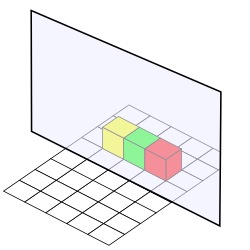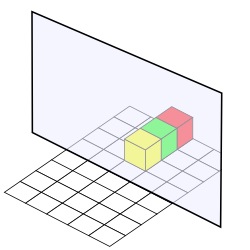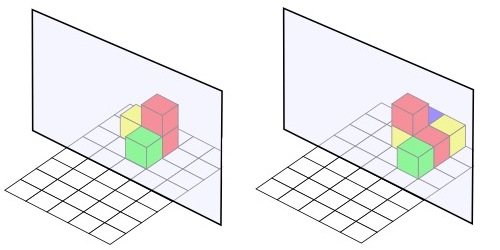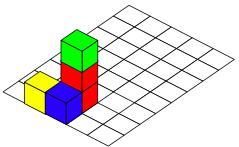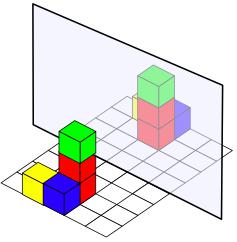Copyright © University of Cambridge. All rights reserved.
'Reflector ! Rotcelfer' printed from https://nrich.maths.org/
Show menu
Why do this problem?
Possible approach
Show one of the images of the reflected cubes to the class. Discuss what the picture is showing us - we can see a mirror and a reflection, but we don't know what the original arrangement was. What could it have been? Encourage pupils to explore this in pairs, giving reasons for their ideas. Choose a child to describe their thinking to the class, drawing or making the arrangement of cubes and
explaining how they know where the cubes should be.
Hand out the other three pictures (all four pictures can be downloaded as a word or pdf file). In groups, pupils could make the reflection and the original arrangements for each one with coloured cubes, putting these cubes on large squared paper with a mirror in between
the two arrangements. Once a group has completed all three arrangements, they can explain their solutions to an adult before moving on to the next step of making their own arrangements. Each child then takes it in turns to make a cube arrangement on one side of the mirror, with the rest of the group working together to make the reflection on the other side.
Bring the class back together at the end of the lesson to discuss their learning. What strategies did pupils find helpful for working out where the reflected shape would be?
Key questions
How can you decide what goes where?
How many squares are there between that block and the mirror line?
Which cube is next to that cube in the reflection?
Tell me about your answer.
Possible extension
This activity can easily be extended by adding to the number of blocks used by one of the group when the others are trying to produce the reflection.
Possible support
Some children might benefit from having the original arrangements made for them out of cubes, rather than starting from the pictures.

